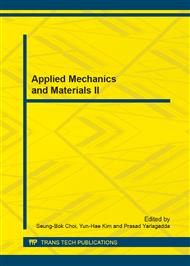p.321
p.325
p.330
p.337
p.341
p.345
p.351
p.359
p.363
The Fitness Characteristics of Elite Female Skaters and Regression Analysis
Abstract:
With the method of ISOMED isokinetic testing system, INBODY 3.0 body composition analyzer and ADIPOMETER subcutaneous fat measuring instrument, this study tries to measure the fitness characteristics of female athletes and then apply mathematical statistics to complete a regression analysis with their results. The main conclusions are as follows: 1. 480°/s hip extensor480°/s knee extensor and 240°/s radios of knee flexor-extensor are highly negative correlated with 500m results, and the regression equation is y = 20.496 - 0.72x1 - 0.64x2 - 0.82x3. 2. Results of the body composition and subcutaneous fat are not highly correlated with 500m result. The hip flexor and extensor at three angular speeds are highly negative correlated with subcutaneous fat of abdomen, upper knee and back, but are highly positive correlated with weight, FFM, BMI and BMR. 3. According to the testing results of body composition, there is no significant difference between two groups, both up to the standard of Asia and world. The maximum value of subcutaneous fat is in abdomen and for another is in upper knees. The minimum value of subcutaneous fat is in outer thigh for long distance athletes and in back for short distance athletes, no significant difference.
Info:
Periodical:
Pages:
341-344
Citation:
Online since:
December 2013
Authors:
Keywords:
Price:
Сopyright:
© 2014 Trans Tech Publications Ltd. All Rights Reserved
Share:
Citation:


